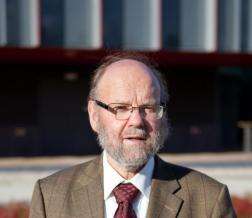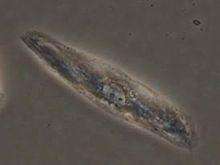Cloning Pioneer Proposes Global Network of iPS Cell Banks
 Ian Wilmut, father of the cloned Dolly the Sheep, is now proposing to father a global induced pluripotent stem (iPS) cell handbook— to go with a proposed new global network of iPS cell haplobanks.
Ian Wilmut, father of the cloned Dolly the Sheep, is now proposing to father a global induced pluripotent stem (iPS) cell handbook— to go with a proposed new global network of iPS cell haplobanks.
With a network of global iPS cell banks— and global iPS cell rules— “everybody in the world would have [safe] stem cells somewhere that produce a reduced immune response,” Wilmut told the New York Stem Cell Foundation (NYSCF) conference recently. The bank is being planned with heavy input from the NYSCF.
“The cell therapy market is doubling year by year,” Wilmut said. In 2011, it was a $1 billion market. In 2012, it was a $2.7 billion market.
It is time to start properly capitalizing on the “transforming moment,” he said, when we first realized we could make stem cells ourselves. The next five to ten years will bring about a “technological revolution” in medicine that will require a “global iPS cell haplobank with universal standards.”
Nobel Prize-winning stem cell approach
 Human iPS cells were born in 2007, when Kyoto University’s Shinya Yamanaka reported he had switched on just four transcription factor genes in limited adult cells— and created pluripotent, robustly proliferating stem cells out of them. They seemed just like the most potent stem cells— embryonic stem cells— except they were derived from adult cells. So they were uncontroversial, and believed able to kick up far less of an immune response than donated stem cells.
Human iPS cells were born in 2007, when Kyoto University’s Shinya Yamanaka reported he had switched on just four transcription factor genes in limited adult cells— and created pluripotent, robustly proliferating stem cells out of them. They seemed just like the most potent stem cells— embryonic stem cells— except they were derived from adult cells. So they were uncontroversial, and believed able to kick up far less of an immune response than donated stem cells.
As time went on, many studies found these cells can be tumorous. The reprogramming process can induce mutations, and it does not erase old ones. But they are giving researchers something they never had before: endless “diseases in a dish” to study and conduct drug screening tests on. Normal adult cells do not tend to replicate much. Stem cells do. Countless papers come out every year detailing advances made in the understanding of disease as a result of the cells. Last year, Yamanaka was given the Nobel for his work.
Advances are also slowly being made in the clinic. This year, the first iPS cell clinical trial was launched in Japan for macular degeneration. The process used avoided tumorigenicity, yet used the patients’ own cells, so they should not be rejected.
Origins of the world bank idea
So things have moved along enough, Wilmut told the NYSCF conference, that it is time to consider the next step: global networks of banks of iPS cells that meet standard western clinical and Good Manufacturing Practices (GMP), and in enough variation that they can match all patients immunologically. Since iPS cells come from adult cells, they should always be in generous supply. All that’s needed are uniform global guidelines for proper creation, storing and distribution of the delicate cells.
The ideas began bubbling on Wilmut’s side of the Atlantic when he was talking about the notion of standardizing iPS cells before it is too late (before standards worldwide start diversifying) with University of Edinburgh blood stem cell researcher Marc Turner. Wilmut is with the MRC Centre for Regenerative Medicine in Edinburgh. That conversation blossomed into a multi-national paper in a 2013 Cell Stem Cell in which the two presented the idea, along with others including Yamanaka, who was devising a plan for Japan, and Alan Trounson, then head of the California Institute of Regenerative Medicine.
“The ability to preselect the donor genotype of iPS [cell] lines provides important opportunities for immune matching in cell therapy,” the team wrote. “Here we propose that an international assessment should be made of how immune incompatibility can best be managed and how a network of GMP HLA homozygous haplobanks could be operated.”
The teams determined that only 150 iPS cell lines are needed to service—provide cells with zero mismatches for— 93 percent of UK patients alone, as long as they are homozygous at three HLA loci, those loci used in organ transplantation: HLA-A, HLA-B and HLA-DR.
“The number of possible combinations is almost 14,000,” Wilmut said.
American lines would need to be more diverse than, say, Japanese lines. But it is doable if done right. “It could be a huge task to go looking for donors,” Wilmut said. But that should not be necessary if the global iPS cell bank network hooks up with existing global blood banks, cord blood banks and GWAS (Genome Wide Association Study) data banks, et al.
Only partial immunosuppression would be needed for cells haplotyped in this way.
There have been some criticisms, Wilmut told Drug Discovery & Development after the talk. Among them: businesses aren’t sure they want to tie themselves down to any regulations unless they must. “But we think it may be harder to get all parties to collaborate in the future, when they don’t have to,” he said. “Now may be the time.”
One idea the team is considering, Wilmut told Drug Discovery & Development: whether to make these global banks of iPS cells out of umbilical cord blood stem cells, as those cells are young, robust and start out with few of the mutations adult cells can carry.
Mahendra Rao, NYSCF vice president for regenerative medicine, told Drug Discovery & Development that the teams will be meeting in March and plan to submit two additional papers to peer-reviewed journals by next December.
The NYSCF, as noted above, is a major player in this alliance (which is now called GAIT, or Global Alliance for iPSC Therapy). The New York group is now attempting to mechanize many aspects of iPS cell production. It is also building its own bank. Many different countries and organizations have been building/planning their own iPS cell banks— one reason that GAIT is seeking global standardization.

